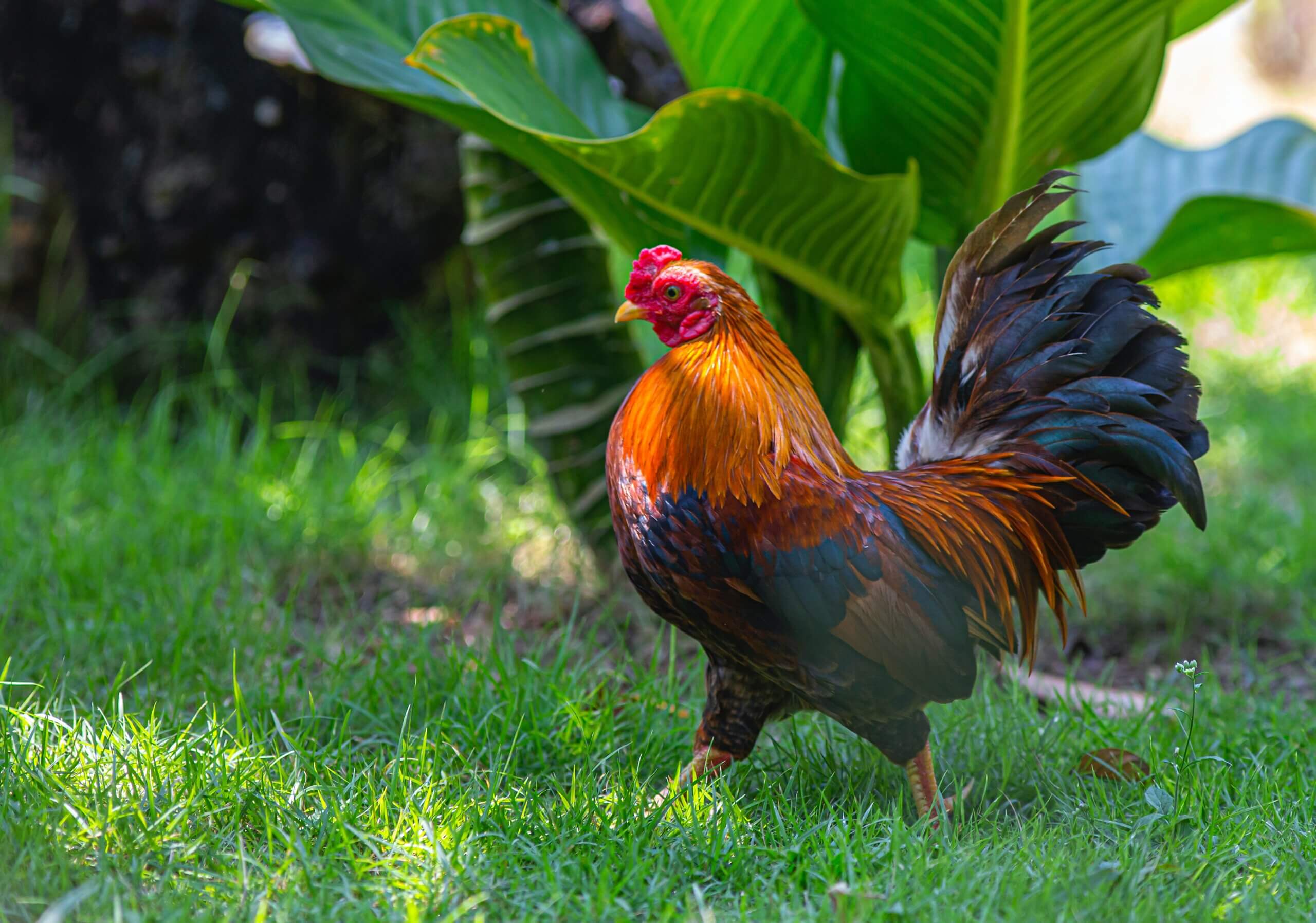
Experts claim that the avian flu spreads rapidly and raises the likelihood of a pandemic. Webby, a researcher at Memphis’ ST Jude Children’s Research Hospital, claims that this is the greatest avian flu epidemic the world has ever seen.
Recent events have caused a great stir in the scientific community. Experts are warning of an avian virus that is rapidly spreading. This is quite worrying, and it seems that the possibility of another global pandemic is looming over our heads right now.
Origin of avian flu
To understand the risks it presents to human health, it is necessary to know the history of the avian flu. Birds are the main victims of the avian flu, also known as avian influenza (bird flu), especially wild aquatic birds like ducks and geese.
The various influenza viruses are naturally stored in these birds. These avian viruses can occasionally spread to domesticated birds like poultry due to a complex interplay of factors, resulting in outbreaks in agricultural settings.
Things to be aware of
- The Bird flu has long been a concern for experts in infectious diseases. Six people died and 18 were infected by H5N1 poultry outbreaks in China in China and Hong Kong in 1997. A year earlier, in Southern China, the virus had been found in domestic waterfowl.
- More than 860 human infections and more than 50% of the victims would die as a result of this virus.
- One of the deadliest pandemics in history occurred in 1918 when a pandemic influenza strain emerged that was so infectious that it affected a third of the world’s population.
- The threat of a bird flu pandemic is still very real. Since the 1918 influenza pandemic, there have been three flu pandemics: H2N2 in 1956–1967, H3N2 in 1968, and H1N1 in 2009.
- It was widely believed that influenza would be the cause of the subsequent pandemic.
- The virus has now been found in a variety of mammal species, including seals in the Caspian Sea, grizzly bears and dolphins in the US, foxes and otters in the UK, and mink in Spain.
- This has raised worries that the virus may have changed to make itself more easily transmitted in mammals, including people, but there is currently no proof of that, according to Prof.
- Mark Fielder of Kingston University’s Department of Medical Microbiology.
- He goes on to say that it is reassuring that there does not yet appear to be proof that the virus has spread from mammal to mammal.
Can avian flu spread to humans?
Is it possible for this avian virus to infect humans across the species barrier? is the burning query on many people’s minds.
The answer is a little complicated, but don’t worry—we’ll reveal the truth. You see, human infections with avian viruses are extremely rare.
But on occasion, though rarely, specific avian flu strains have been able to spread from birds to people, causing severe illness and sometimes even causing death.
Although the probability of avian flu spreading to humans is typically low, we cannot completely rule it out.
The primary culprit in this story is the H5N1 strain of the avian flu virus. The majority of human cases of avian flu have been caused by this infamous strain.
The risk of transmission rises when people are in close contact with sick birds or their bodily fluids. Imagine the people engaged in poultry farming or crowded markets filled with live poultry.
These circumstances offer favourable conditions for possible interactions between avian flu viruses and people.
But hold on—don’t give in to fear just yet! The good news is that avian flu transmission from person to person is still extremely rare.
Direct contact with infected birds or their bodily fluids has been the main method of transmission in the majority of reported cases.
But it’s essential to keep an eye on the virus’s development and to exercise caution.
Worldwide efforts are being made by scientists and public health authorities to stop and contain the spread of avian flu.
They maintain strict surveillance, pay close attention to the flu strains that are common in avian populations, and create vaccines to prevent potential outbreaks.
Public relations efforts and instruction about hygienic habits can also help lower the risk of transmission.
So, can the avian flu infect people? The complex interaction of many different factors holds the key, but it’s not completely out of reach.
Even though the risk is still low, it’s important to stay informed, practise good hygiene, and follow health authorities’ recommendations.
Avian virus with chickens ( bird flu)

An infectious viral infection, the avian virus, also known as avian influenza or bird flu, primarily affects birds, especially chickens.
The health and well-being of flocks of poultry can be significantly harmed by this virus.
When an avian virus outbreak happens, it can quickly infect chickens and result in a variety of symptoms.
These may include respiratory conditions, decreased egg production, and, in extreme circumstances, even death.
Farmers and carers of poultry must be aware of these symptoms and take appropriate measures to safeguard their flocks.
However, how does this virus spread among hens? Well, the avian virus can spread by a variety of means, much like a silent intruder.
One of the main methods of transmission is direct contact between sick and healthy birds.
This can occur in crowded poultry farms or live bird markets where chickens are in close quarters.
The virus can also travel on dirty surfaces items, or even in the waste of infected birds.
Consider a situation where a chicken unknowingly pollutes the ground or shares a water source with an infected bird.
These incidents give the avian virus the chance to spread and infect more chickens in the flock.
Although the avian virus is a serious threat to chickens, it’s important to remember that it rarely spreads to people. To avoid any possible crossover, precautions should still be taken.
To reduce any potential exposure to the virus, good hygiene procedures, such as thorough hand washing, should be followed when handling chickens or their products.
Poultry farmers and authorities use several preventative measures to fight the avian virus and safeguard chicken populations.
These consist of conducting routine bird testing, putting health care procedures into place, and acting quickly in the event of an outbreak.
Additionally, vaccination campaigns are conducted to lower the risk of infection and guarantee the welfare of chickens.
The avian flu seriously endangers the health and way of life of chickens. Despite the generally low risk to humans, poultry farmers and keepers need to be watchful and take the necessary safety measures to stop the virus from spreading.
We can protect our chicken populations and make sure they will be healthy in the future by understanding the avian virus and putting the right biosecurity measures in place.
Avian virus symptoms in chickens
It’s important to keep an eye out for any symptoms of illness in our feathered friends. The avian virus and its effects on birds are one specific issue that needs to be addressed.
What are the signs of this virus, though, and how can we spot them? Let’s solve this puzzle and explain the signs of the avian virus in terms that everyone understands.
1. Respiratory distress
Respiratory distress is one of the avian virus’ typical symptoms. Birds may display symptoms like coughing, sneezing, and trouble breathing. These respiratory problems can make our feathered friends feel weak and exhausted, just like they do in humans.
2. A decrease in egg production
A decrease in egg production is another obvious symptom of the avian virus. Infected hens may lay fewer eggs or even cease to lay altogether.
For poultry farmers, this decline in egg production is a significant warning sign because it suggests that there may be a problem with the flock.
3. Neurological symptoms
Additionally, avian virus-infected birds may exhibit neurological symptoms. These include a lack of coordination, shaky movements, and, in more severe cases, paralysis.
Important indicators of the virus’s effects on the birds’ nervous systems include these neurological symptoms.
It’s important to act right away if you believe your birds may be infected with an avian virus. The virus can be stopped from spreading by separating infected birds from the flock.
It is advisable to get in touch with your local agricultural authorities or a veterinarian because they can advise you on testing, treatment, and any necessary preventative measures.
Although the avian virus primarily affects birds, it’s important to keep in mind that there is typically little risk to humans. When handling birds or their products, good hygiene is still essential.
After any contact with birds, thoroughly washing your hands can help lower the possibility of transmission.
We can take preventative measures to safeguard our bird populations by being aware of the signs of the avian virus and remaining vigilant.
Maintaining the health and well-being of our feathered friends requires constant observation, quick response, and the need for expert advice when necessary.
Knowing the warning signs is a vital tool in the constantly changing world of avian viruses.
We can identify avian virus symptoms early on and work to protect our beloved bird communities by remaining informed and vigilant.
In conclusion,
we must take seriously the rapid spread of the avian flu. This virus can hurt and destroy bird life. Although there is typically little risk to humans, we still need to be cautious and alert.
We can jointly reduce the effects of avian flu by closely monitoring the situation, following safety precautions, and getting expert advice. Let’s work to preserve the safety of everyone, including humans and birds. Have a look at this post: Comprehensive Guide to Powassan Virus: 6 Symptoms, Diagnosis & Treatment.



1 thought on “Avian Flu Spreading Rapidly: Should We Be Worried?”